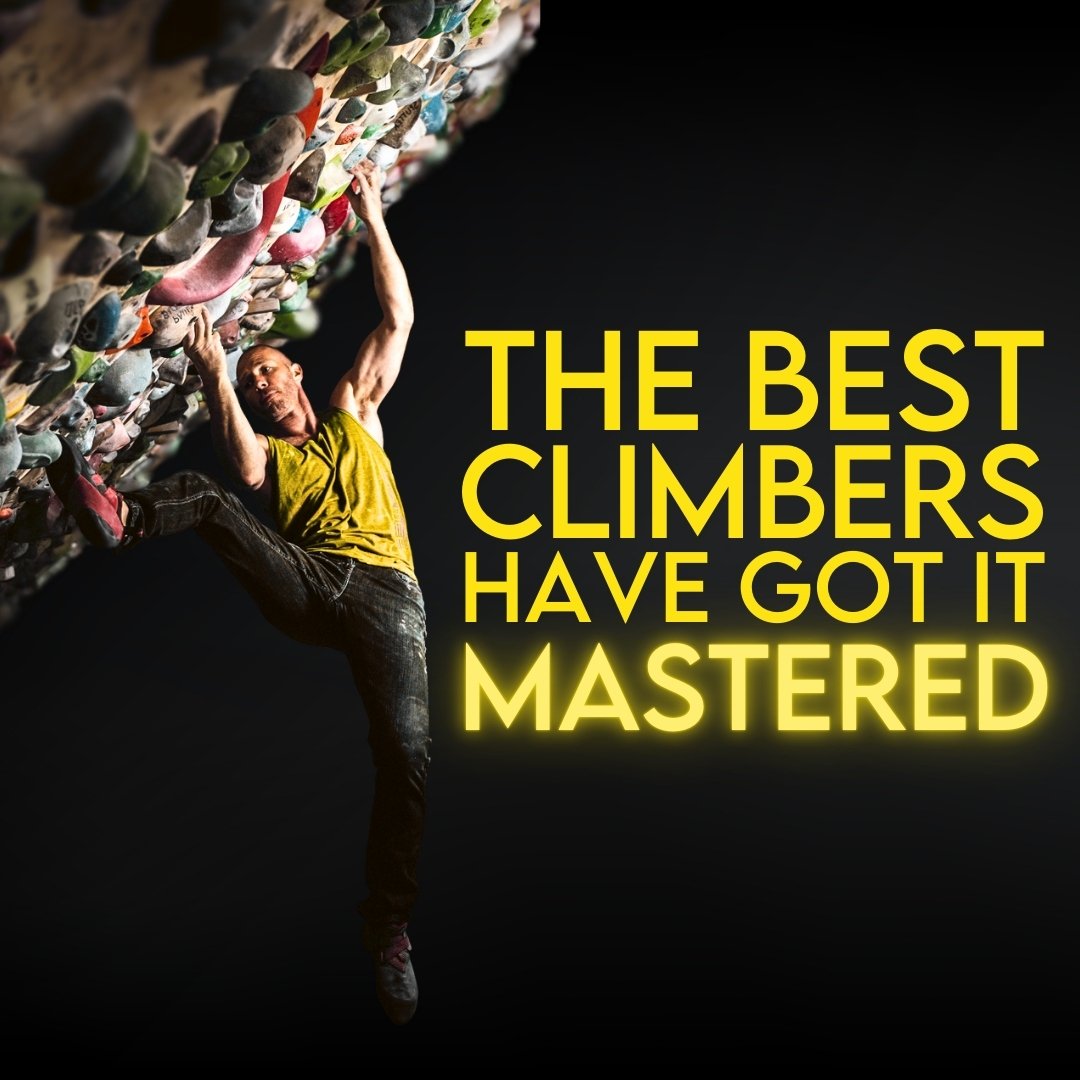Taped Tips | Go Ahead, Grab That Foothold and Be Adaptable
Go ahead, grab that foothold.
I mean, it’s only a foothold until someone uses it as a handhold. Then it’s just a hold. So use it.
And if you don’t want to because you’d rather challenge yourself to do it without using that really obvious hold right there, that’s fine, too. There’s no heroism in skipping an obvious hold. There’s no shame in using a hold other people aren’t. What’s possible, though, is that if you always choose one way or the other, then you’ve painted yourself into a corner. A corner that just doesn’t offer as many opportunities to learn.
So there’s a question that both of you should be asking yourselves. And that question is:
Can I do it both ways?
Can I become more adaptable?
That’s two questions, but you know what I mean.
See, climbing is a game of compensation. We encounter something difficult, and if we can’t do it one way, we find another way. A way that plays to our strengths. Particularly in the performance environment, this is exactly what we SHOULD be doing. It’s the reason that there are very few rock climbs – even the ones that supposedly had just enough holds to make them possible – that don’t have alternate beta.
But maybe, just maybe, we should be doing this compensation – this playing to our strengths – in practice as well. Because don’t get it twisted:
Learning when and how to compensate for a weakness is a skill. And skills need to be practiced.
We look at the best climbers in the world and compare ourselves to their finger strength and assume that’s where we need to improve. But that’s only one area where they are better. And we’ve noticed that. We’re doing it.
What many of us aren’t doing as much of, and what might make an even bigger difference in our climbing, is learning to better compensate.
Let’s take, for example, Nalle’s testpiece that’s recently seen lots of action, Burden of Dreams. Nalle tried it for quite some time, convinced there were just enough holds, before showing it to Daniel, Dave, and Jimmy. In that session, they found new foot beta using an entirely new foothold. Before Will Bosi did the second ascent, he explored heelhook beta for the second move that could cut out a bunch of foot moves. He opted to use the original beta for the send, but somebody will find the heelhook method easier. When Stefano Ghisolfi tried it, he found yet a new sequence with different feet and a handhold that hadn't been used. Before Simon Lorenzi did the third ascent, he broke a foot on the starting move – the hardest move – and had to use another. He also found beta to skip a move and do an entirely different hand sequence. One of the most “pure” boulders out there, with just enough holds to allow passage, yet different climbers keep finding different ways to do it.
That’s because the best climbers in the world are ADAPTABLE.
They know what they are good at and when they can leverage that to their benefit. Every one of the recent repeats and most people attempting it have used a replica set for the original beta.
Most of them have found another way altogether. Because they seek it out.
And you’ve been there. You bump up against a puzzle that you just can’t solve using the “approved” method, so you find an easier way. Maybe your solution feels harder to everyone but you, or maybe it actually is an easier way. Or maybe you cycle through every possible iteration of movement solution you could conjure up that might potentially unlock this, and still you end up right back where you started: doing the move via the “approved” beta.
Maybe it’s your height, or your wingspan, or your shindex. Your crimp strength, your hip mobility, or your aversion to moving dynamically. Your discomfort on this type of rock, or you just don’t have whatever is required to solve this puzzle and find the movement solution – yet. It could be anything. But the point is, you find a way around it. Using something that – for you – is a superpower other people hadn’t considered.
You piano match or shadow match or grab a foothold right in the middle of the giant crux move. You find a sloper nobody noticed because of the obvious crimp. You static your way through the dyno using a nearly invisible intermediate to mantle off of. You overgrip and get pumped, but you use your pump management skills to clip the chains anyway. You toe hook where everyone else heel hooks around the corner.
You find a way around it. That’s climbing.
It’s literally how it works.
But what if you don’t have any of those skills because you haven’t practiced compensating for your weaknesses? You always climb on boards where you watch the beta videos and follow all of the “rules”? You throw yourself over and over at the heelhook around the corner because it’s what the setter intended or how the FA with the ridiculous hip mobility did it. You never learn that in this very situation, a toe hook might work just as well.
Or worse yet, any time you encounter a weakness your response is something like, “Oh well, time to get back into the gym to get more hip mobility/or finger strength/or I need to get my glutes firing correctly before I can try that move again.” For fuck’s sake. Climbing is hard. It’s supposed to be. You’ll end up saying these things over and over because it’s going to feel hard, and as a result, not send anything actually hard for you. I’ve seen it happen. If you always decide you just need to wait until you’re stronger or better or whatever, and you won’t ever “cheat” on the boards by using a different sequence or grabbing a foothold, will you ever get more adaptable?
Will you know when trying a different way will be effective? Will you waste time, skin, and energy trying a million different things that aren’t any easier because you just can’t tell the difference? How do you know whether you need to search for new beta, try to refine current beta, or just freaking try harder because you already have a totally acceptable method?
Like any other skill, to improve, you spend time trying those things. You fail. You succeed.
You get better at making those decisions, by making those decisions, and then reflecting on them.
In short, you practice it. That’s climbing.
All of us, even those who have decided that we should always use intended beta or FA beta, want to have more movement solutions to choose from. But to do that, you have to explore in practice. Find ALL of the ways that you can do a boulder differently. Find the harder ways, the easier ways, or just alternate ways. Don’t wait until you’re stopped by a move. That’s often the most frustrating way to do it. Start practicing now and you’ll be stopped by a lack of better options far less often.
Compensation skills – or adaptability – may indeed be the most valuable skill in the entire sport of climbing, whether you are a boulderer, sport climber, big wall enthusiast, alpinist, gym rat, or any other form of climber.
Well, maybe unless you’re a speed climber. The route is always the same. Except good climbers have found lots of better solutions there, too, playing to their strengths instead of just accepting that there’s only one way. And even when they’ve got the best sequence for them dialed in, they still have to adapt to a different crowd, temperature, humidity, pressure, etc., etc.
Being able to adapt to a new situation is the entire goal. Sure, work on the things you’re bad at. But also work on finding the things you’re good at in the midst of what’s hard for you.
You don’t always have to go straight through the difficulties. Sometimes it’s better to just find a way around them.
That’s climbing. Literally.
EXPLORE FURTHER
You might enjoy these related articles, episodes, and other resources:
Our Movement Practice Resource Page
SUPPORT + CONNECT
Help us keep the show sponsor-free when you join our Patreon Community for as little as $3.
Get two or more bonus episodes every month on Patreon, Spotify, or Apple.
Subscribe to THE CURRENT and get a monthly exploration of how we can all become better climbers.
Find Power Company on Instagram and YouTube.
Share this episode with a friend who needs to hear it.
LISTEN ON YOUR PODCAST APP OF CHOICE
We’re a proud founding member of the Plug Tone Audio Collective, a group of the best, most impactful podcasts in the outdoor industry.


























A better way to view grades and progression?